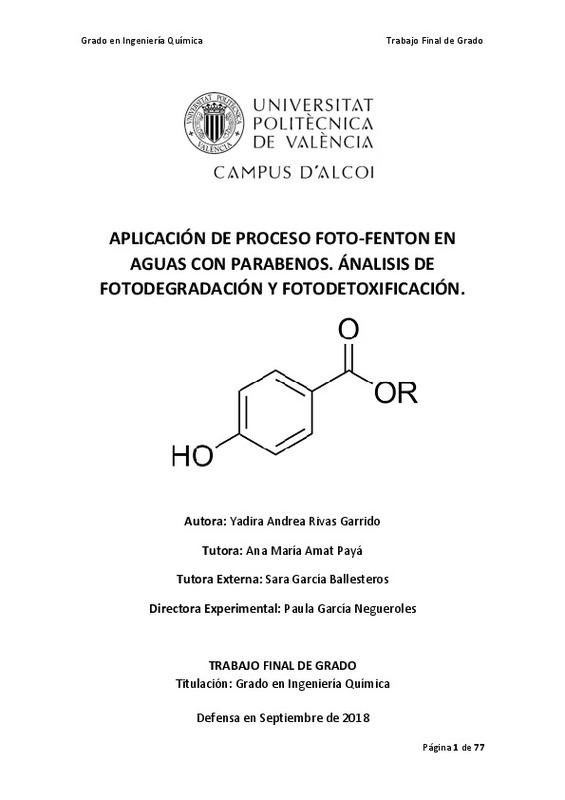JavaScript is disabled for your browser. Some features of this site may not work without it.
Buscar en RiuNet
Listar
Mi cuenta
Estadísticas
Ayuda RiuNet
Admin. UPV
Aplicación de proceso fotoFenton en aguas con parabenos. Análisis de fotodegradación y fotodetoxificación
Mostrar el registro completo del ítem
Rivas Garrido, YA. (2018). Aplicación de proceso fotoFenton en aguas con parabenos. Análisis de fotodegradación y fotodetoxificación. http://hdl.handle.net/10251/117439
Por favor, use este identificador para citar o enlazar este ítem: http://hdl.handle.net/10251/117439
Ficheros en el ítem
Metadatos del ítem
| Título: | Aplicación de proceso fotoFenton en aguas con parabenos. Análisis de fotodegradación y fotodetoxificación | |||
| Autor: | Rivas Garrido, Yadira Andrea | |||
| Director(es): | ||||
| Entidad UPV: |
|
|||
| Fecha acto/lectura: |
|
|||
| Resumen: |
[ES] En el presente trabajo se estudia la fotodegradación y detoxificación de una serie de parabenos, en concreto tres parabenos (metilparabeno, etilparabeno y propilparabeno), habitualmente utilizados en la industria ...[+]
[EN] In the present work we study the degradation of a series of parabens, in particular three parabens (methylparaben, ethylparaben and propylparaben), commonly used in the cosmetic industry as preservatives, by applying ...[+]
|
|||
| Palabras clave: |
|
|||
| Derechos de uso: | Reserva de todos los derechos | |||
| Editorial: |
|
|||
| Titulación: |
|
|||
| Tipo: |
|
recommendations
Este ítem aparece en la(s) siguiente(s) colección(ones)
-
EPSA - Trabajos académicos [5826]
Escuela Politécnica Superior de Alcoy







